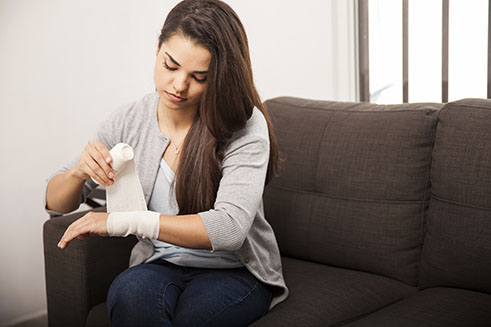BACK TO MOBILITY.
Taking Care of the Whole You
Now that you know how to cover the wound and help protect it against infection, continue to cover it and change your bandage at least 2x a day1, or as directed by doctor. Keep taking care of yourself! Recovering is about more than just helping your wound heal. It’s also about maintaining your well-being. As you heal, it’s important to:
- Eat nutritious foods, such as fruits and vegetables. A balanced diet will give your body the nutrients it needs to heal.
- Get plenty of rest each night. Healing is a lot of work for the body, so it’s important to recharge with good sleep.
- Relax by reading a favorite book or listening to soothing music. Managing your stress helps the healing process.
- Wear comfortable clothes and shoes to help with mobility. Continue to cover your wound with a bandage to keep clothes from sticking to it.
- Celebrate your small victories. Getting back on your feet after surgery is a big step. Feel good about your progress
NURSE TIP: Most importantly, continue to clean, treat, and protect the wound. A good care routine is the best way to ensure complete healing.
Recognizing the Signs of Healing
Look at your wound as you change your bandage. If you notice the skin around it stretching, itching, or puckering, this is a good sign. It means your wound is healing and the skin is getting stronger.7 As healing continues, your wound should become flat, pale, and smooth. You may notice a scar forming. This is a normal part of the healing process.8

References:
1. Cuts and scrapes: first aid. Mayo Clinic Web site. http://www.mayoclinic.org/first-aid/first-aid-cuts/basics/art-20056711. Accessed March 14, 2014.
7. How wounds heal. Johns Hopkins Medicine Web site. http://www.hopkinsmedicine.org/ healthlibrary/conditions/surgical_care/how_wounds_heal_134,143/. Accessed June 24, 2014.
8. Flanagan M. The physiology of wound healing. J Wound Care. 2000;9(6):299-300.


